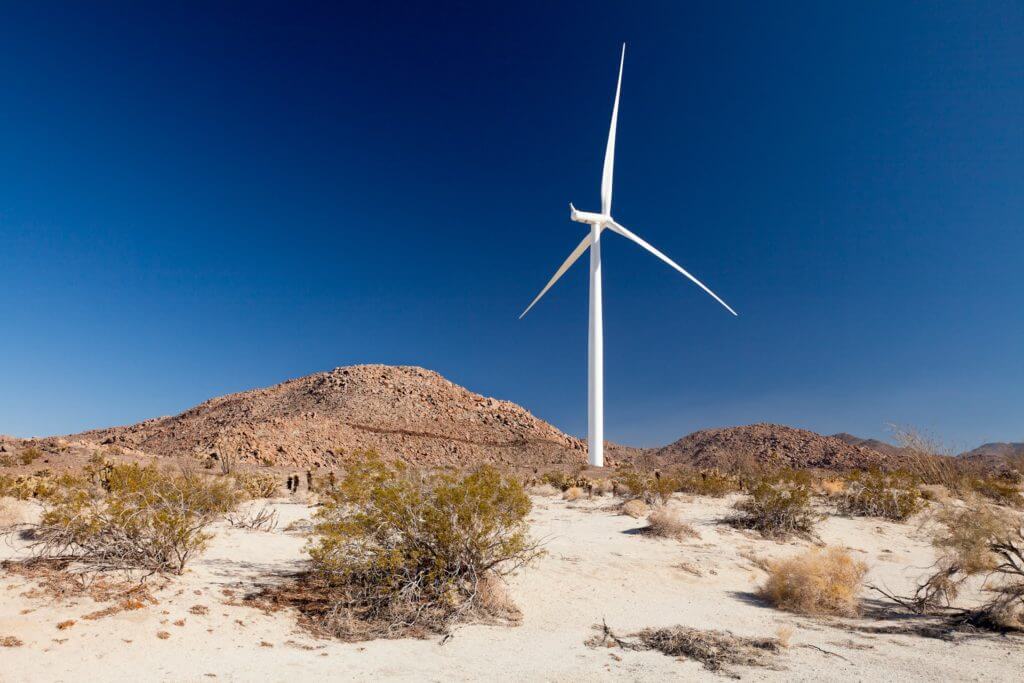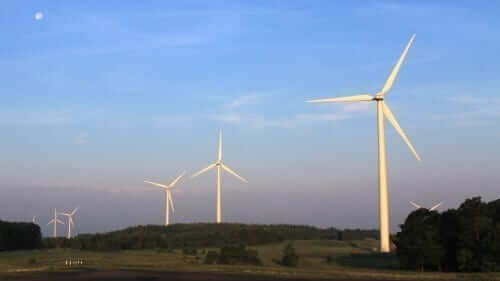Fact Check: Wind power is a cost-effective way to reduce emissions
A working paper by Charles Frank has generated attention among fossil fuel industry-funded anti-wind groups, although a more thorough examination shows the paper is plagued by inaccurate data inputs and assumptions that greatly skew the results against wind energy. Once those errors are corrected, the paper shows wind energy to be a highly cost-effective energy source that greatly benefits consumers and the environment. Below, we identify these critical errors and show how they skew the results.
Wind energy is far more productive and lower cost than the paper’s obsolete assumptions
The largest error in the paper is the use of incorrect capacity factor data for wind and natural gas power plants, as this error is directly factored into the calculation of all three benefits quantified by the paper.
Specifically, this mistake causes the paper to greatly underestimate the energy, capacity, and emissions benefits of wind energy, while simultaneously greatly overestimating these three numbers for gas generation. As shown below, Department of Energy data indicate that wind projects are far more productive than Frank assumes, while new natural gas combined cycle power plants produce far less energy than Frank assumes. While Frank assumes that the capacity factor of combined cycle gas plants is nearly four times greater than that of wind, in reality the gas capacity factor is only slightly larger than that of wind.
| Wind capacity factor | Gas combined cycle capacity factor | |
| DOE data (average 2008 – 2012 | 31.0% | 44.2% |
| Frank's assumption | 25.5% | 92% |
| % under-over estimate | -21% | +108% |
The main source of the wind capacity factor error appears to be Frank’s reliance on obsolete data, using a simple average of wind plant capacity factors over the 2002-2012 time period. There are several major flaws with this approach. First, today’s larger, taller, and more efficient wind turbines capture far more energy than state-of-the-art wind turbines captured even a few years ago.
Second, it is important to understand that capacity factor is a cumulative average for all wind plants that have been installed up to that point in time and continue to operate. For much of the 2002-2012 time period, the U.S. wind fleet was largely composed of 1980s and 1990s-vintage wind turbines, which are an order of magnitude smaller and far less productive than those being installed today. This error is compounded by Frank’s use of a simple average over this time period, so 2002’s capacity factors are given equal weight to 2012’s, even though about 10 times more wind energy was produced in 2012. Regardless, Frank’s historical approach is inappropriate for his paper’s stated goal of assessing the benefits and costs of installing wind on a going-forward basis.
For the gas power plant capacity factor, Frank inexplicably fails to use data on how gas power plants are actually being operated, which is the key question for assessing the costs and benefits of installing gas power plants, but instead cites a press release from a gas power plant manufacturer estimating the maximum possible output of its gas power plants. Comparing the maximum possible capacity factor for gas against the real-world average for wind results in a meaningless apples-to-oranges comparison. No explanation is provided for Frank’s decision to use a manufacturer estimate for maximum gas capacity factors when real-world average capacity factor data is available from the Department of Energy for both wind and gas.
Correcting for these capacity factor errors would increase the calculations for the emissions and energy benefits provided by wind energy by an amount roughly proportionate to the capacity factor error, and should also increase the economic value of wind energy’s capacity. The calculated economic value of natural gas generation would be similarly decreased.
Correcting this error alone would cut Frank’s calculations for the economic benefits of natural gas by more than half, while increasing wind’s benefits by more than 20%.
Another major error is the use of incorrect and obsolete costs for wind generation.
The table below shows how Frank’s assumed costs for wind generation are much higher than reality. In addition, without explanation Frank assumes an expected life of 20 years for wind projects, even though 25 years is the more commonly used standard assumption, further harming the economic calculus for wind energy. Moreover, some of the cost assumptions for other generating technologies appear to be major underestimates relative to data from real-world projects.
| Installed wind project cost | |
| Frank's assumption | $2,213/kW |
| DOE data, 2012 | $1,940/kW |
| DOEdata, 2013 (preliminary) | $1,630/kW |
Thanks to technological advances and the completion of long-needed transmission upgrades, the cost and capacity factor data for wind projects that are being installed today are even more favorable than indicated by the 2012 DOE data above. Some wind projects that are currently under construction have signed power purchase agreements and made other financial commitments based on expected capacity factors of 50% or higher, 100% larger than the assumption used in Frank’s paper. Preliminary data for 2013 appear to indicate installed wind project costs fell dramatically, a conclusion supported by record low prices for recent wind turbine purchase agreements and wind energy power purchase agreements.
Accounting for the value of capacity
While the use of incorrect data inputs is the most obvious problem in the paper, an incorrect assumption about how to account for the economic value of meeting power system capacity needs also greatly skews the results against wind energy and in favor of nuclear and gas generation.
Frank assumes that there is a demand for new power plant capacity to meet system capacity needs, and that the construction of new power plants is the economic option for meeting that need, both of which are invalid assumptions in most U.S. electricity markets.
Most U.S. electricity markets have excess electricity generating capacity, so system capacity needs are being met by existing power plants without a need for new resources. Instead of assigning the cost of building a new power plant as the economic value of capacity, in this case the economic value of capacity is simply the fixed cost of maintaining existing power plants. Frank’s paper provides data on fixed O&M costs, which are just 10-14 percent of his total calculated cost of capacity for gas and coal power plants. So in markets without a need for new capacity, Frank’s analysis overstates the economic value of capacity by a factor of 7-10.
In those U.S. markets with incremental capacity needs, demand response, energy efficiency, and other innovative resources are meeting additional system capacity needs at a fraction of the cost of installing a new conventional power plant. In fact, the electricity capacity markets that exist in some regions of the U.S. provide a precise market signal for the economic value of new capacity, and in these markets that value is well below the cost of building a new power plant. For example, the following table from the PJM Independent Market Monitor report (page 12) shows that the total value of the capacity market accounts for only around 13% of the value of the total electricity market. As a result, the economic value of capacity should not be a major determinant of the economic value of different energy sources, contrary to Frank’s findings.

Because the economic value of capacity accounts for most of the advantage Frank shows for gas and nuclear power plants relative to wind, correcting to the actual economic value of capacity greatly reduces the economic advantage he finds for those technologies. Adjusting for the incorrect capacity factor and cost assumptions discussed above would make it even clearer that wind energy is an economic choice for consumers and the environment.
Finally, while Frank correctly acknowledges that the cost of reliably integrating wind and solar energy is “quite small,” he fails to account for the comparable if not larger integration cost of accommodating the abrupt failures of large conventional power plants. While changes in wind and solar energy output occur gradually and are predictable, failures at large conventional power plants occur instantly and without warning, requiring grid operators to keep expensive fast-acting reserves on hand 24/7. Accounting for these costs, which are currently passed on to customers and not paid by conventional power plant owners, would further tip the balance in favor of wind energy.
While Frank offers a thoughtful approach to assessing the relative costs and benefits of different energy sources, his conclusions are marred by the use of incorrect data inputs, resulting in an unfortunate illustration of the maxim “Garbage in, garbage out.” If these errors are corrected, Frank’s analysis shows wind energy to be a highly cost-effective energy source that greatly benefits consumers and the environment.



